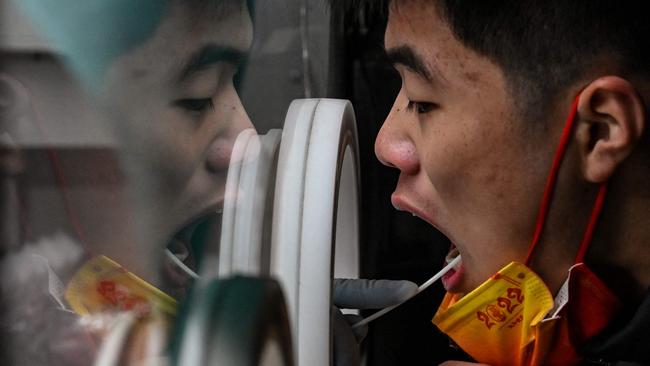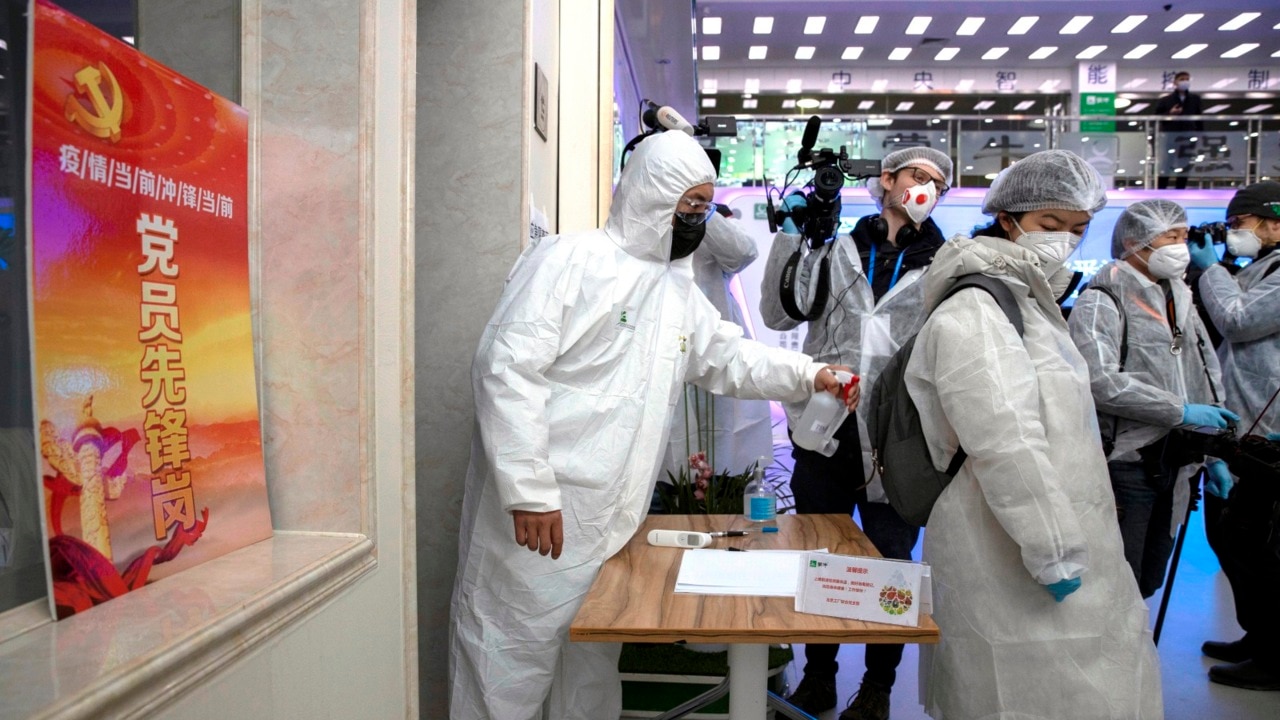China Stops Issuing Daily Covid Data Ahead of Outbreak’s Peak
Hospitals and crematoriums are filling up and pharmacies are running out of drugs, with reports of half a million infections daily.

China’s central health authority has stopped publishing daily Covid-19 data, ending a three-year effort that has drawn mounting criticism for massively underreporting the surge in infections now sweeping the country.
In a one-line announcement Sunday, China’s National Health Commission said it would no longer issue its daily report on Covid infections and deaths. Relevant Covid information will instead be published by the Chinese Centre for Disease Control and Prevention for reference and research, it said, without giving any further information.
In its final daily report Saturday, the commission said there were just over 4100 locally transmitted cases recorded the prior day, and no deaths.
Doubts over the reliability of China’s health data have persisted for years, but there has been a widening gulf between the official numbers and anecdotal evidence of spiralling infections on the ground. Hospitals and crematoriums are filling up, while pharmacies in many big cities have run out of fever and cold medicines as people fall sick, The Wall Street Journal has reported.

“They don’t have reliable data to report anyway,” University of Hong Kong epidemiologist Ben Cowling said, pointing to Beijing’s decision this month to stop widespread virus testing. The lack of data means authorities cannot accurately predict when infections will peak, which would hinder their ability to devise appropriate measures in response, he said.
China’s leaders in early December abruptly abandoned the so-called zero-Covid restrictions that aimed to quickly identify, isolate and crush outbreaks, arguing that the virus had evolved to become less deadly than when it first emerged in the city of Wuhan almost three years ago.
Beijing’s Covid response task force, headed by the city’s Communist Party secretary, said Friday that the nation’s capital must use all means possible to increase the proportion of people who have recovered from the coronavirus while reducing the number of deaths.
Several provincial authorities including the governments of Zhejiang, Hainan, Jiangxi and Anhui as well as the city of Qingdao said local outbreaks would reach their peak in the coming days.
Daily infections in the eastern coastal province of Zhejiang, a major hub for Chinese technology start-ups and base for e-commerce giant Alibaba Group Holding Ltd., breached one million, based on estimates from community sampling, said Yu Xinle, the deputy director of the province’s health agency. The region of almost 65 million people expects its outbreak to plateau at around two million cases a day for a week around New Year’s Day, Mr Yu said Sunday.
The southern city of Dongguan, a well-known export-oriented manufacturing centre, has seen an estimated 250,000 to 300,000 new infections every day, according to a state-owned newspaper report posted on social media by the city’s health authorities on Friday. Almost half of the 3000 people working at one hospital were infected, and as of Thursday more than 2500 medics working for the authority had turned up for work despite having a fever or testing positive, the report said.
In the northeastern city of Qingdao, between 490,000 and 530,000 people are getting infected a day, with the number expected to increase by 10 per cent a day over the weekend, local health official Bo Tao said during a since-removed interview with state-owned broadcaster Qingdao Television.
In the absence of reliable infection numbers, some local health authorities have turned to proxy data to gauge the impact of infections.
The number of people seeking treatment at some of Jiangxi province’s top hospitals and clinics grew more than 20 per cent a day between December 9 and 22, the local government said in a social media post on Friday.
The provincial authority said it expects the outbreak to reach its peak by early January and continue for about three months before reaching a general infection rate of close to 80 per cent, it said. The province of about 45 million people hasn’t reported any Covid-related deaths and hospitals haven’t been overwhelmed, it added.
In Hefei, the capital of eastern Anhui province and home to automobile plants of Volkswagen AG and NIO Inc., the outbreak is expected to peak around Christmas. Most of the province will see Covid cases reach their height by the end of the month, according to an Anhui government announcement on social media. On Friday, the NHC reported no Covid cases for Anhui, home to about 61 million people.
Factories and businesses across China entered new territory as large numbers of workers were out on sick leave. To cope with the absences, some factories have reduced work shifts, while cities issued guidelines that people could return to work even if they still tested positive or if they had mild symptoms. Shanghai authorities said Saturday that the city’s 25 million residents wouldn’t need to be isolated at home for more than seven days, even if they are still testing positive.
For almost three years, China had deployed the world’s most stringent measures to contain the Covid virus, using sweeping lockdowns – sometimes covering entire cities for months on end – mass testing and compulsory quarantine in massive, government-run isolation centres. As the highly transmissible new variants of the virus proved impossible to control, the government switched tack in early December.
After first abandoning almost all testing, it then stopped recording asymptomatic cases — a move that led the daily Covid infection tally to plummet at the same time as public-health experts were saying a huge exit wave was inevitable.
What remains unclear is the toll Beijing’s turnabout exacts on a population that has had almost no exposure to the virus and that lacks the widespread protection from Covid’s worst effects achieved by populations in many developed countries.
The Wall Street Journal



To join the conversation, please log in. Don't have an account? Register
Join the conversation, you are commenting as Logout